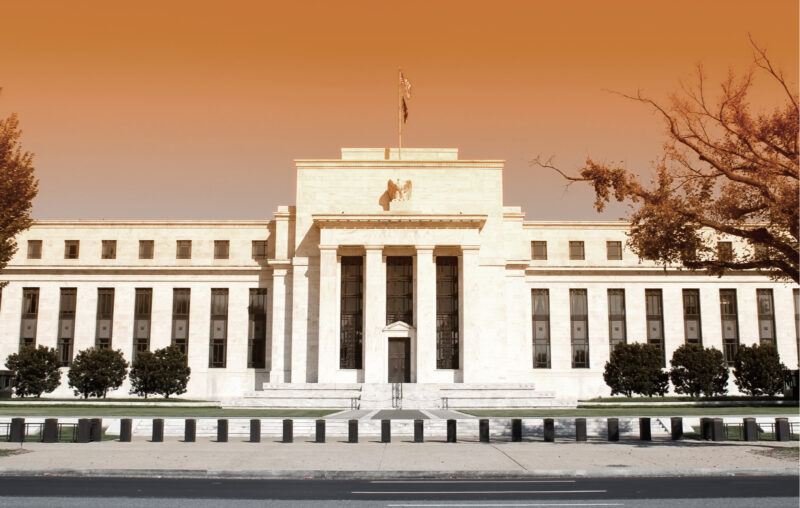Monetary Policy in a Pandemic

A year ago, the U.S. economy was humming along like a well-oiled machine. Annualized real gross domestic product (GDP) per capita stood at $58,490 in 2019-Q4. The unemployment rate in February 2020 was just 3.5 percent. Then, in early March, everything changed. Fears of pandemic followed by stay-at-home orders and other restrictions on businesses and consumers prompted the sharpest economic contraction on record. Annualized real GDP fell to $52,387 in 2020-Q2––an annualized growth rate of negative 24.7 percent! For comparison, the annualized growth rate during the Great Recession from 2007-Q4 to 2009-Q2 was negative 3.7 percent.
Nicolas Cachanosky, Brian Cutsinger, Thomas Hogan, Alexander Salter, and I provide an initial assessment of the Fed’s policy response to the Covid-19 contraction in a new paper forthcoming in the Southern Economic Journal.
In brief, we credit the Fed with promoting monetary stability while maintaining that it could have––and, given its mandate, should have––done more. It could have achieved something approximating monetary stability without employing its emergency lending facilities. Although some of its facilities likely helped to promote general liquidity, others were primarily intended to allocate credit, which blurs the line between monetary and fiscal policy. These credit allocation facilities were unwarranted and unwise.
You can read the full working paper version on SSRN.
Before evaluating the response, we first make clear what went wrong. “In a standard textbook macroeconomic model,” we write, “the Covid-19 pandemic and corresponding restrictions on activity is best treated as a temporary reduction in total factor productivity. While physical and human capital are essentially unchanged, those stocks are less capable of producing valuable goods and services than they were prior to the pandemic.”
The idea that Covid-19 made us less productive might seem strange to noneconomists. But it’s true. In January 2020, we could use some labor and capital to produce relatively safe restaurant meals, for example. In March 2020, that same labor and capital could not produce as many relatively safe restaurant meals––if any at all. The decline in productivity was partly due to the virus, which increased the technical cost of producing relatively safe restaurant meals, and partly due to legal restrictions, which increased the legal cost of producing relatively safe restaurant meals. Much the same could be said about business flights, pleasure cruises, and many other goods and services we enjoy.
A temporary reduction in total factor productivity reduces real output, employment, labor hours, capital utilization, real wages, and real rental rates. And, in the absence of changes in aggregate demand, it causes the price level to temporarily rise above trend.
What should the Fed do in response to a negative productivity shock? We might not like the decline in real output, employment, labor hours, capital utilization, real wages, and real rental rates. But there’s not much the Fed can do about that. We are worse off because we are less productive. Monetary policy doesn’t make us more productive.
The best the Fed can do, therefore, is to prevent the situation from being any worse than is required by the negative productivity shock. It can accomplish that by (1) preventing a decline in nominal spending and (2) ensuring that credit markets continue to function well.
We argue that the Fed performed reasonably well with respect to managing nominal spending. Judging by inflation expectations, market participants initially expected the Fed to falter. But the Fed’s bold actions eventually convinced them that it would do whatever it took to get the job done. A more credible Fed would have done better. But our actual Fed wasn’t bad in this respect.
Fed policy went awry, we argue, in implementing a host of new lending facilities. We show that these facilities were not needed. Measures of financial stress were elevated. But they looked a lot more like they did during the 2001 recession (hardly a financial crisis) than they did during the Great Recession. Financial markets could have gotten the job done without the Fed’s new lending programs. Indeed, many of the Fed’s programs operated well-below capacity. The Municipal Lending Facility attracted just two borrowers, amounting to roughly 1.3 percent of its total lending capacity. The Main Street Lending Program operated at less than 2.9 percent of its capacity, while the Primary and Secondary Market Corporate Credit Facilities operated at around 28.7 percent of their combined capacity.
The Fed’s new lending programs, in other words, were not very helpful. But they come at a potentially high cost. Insofar as they were designed to allocate credit, as opposed to merely providing liquidity, they amount to an expansion of the Fed’s mandate. And, although the extent of the Fed’s credit allocation was limited this time, it has set a dangerous precedent, which risks subjecting the Fed to even more political influence going forward.
With vaccines rolling out and the economy continuing to recover, it looks like the worst of this downturn is behind us. The Fed has wrapped up many of its lending programs and settled into more normal operations. No doubt others will weigh in on the Fed’s performance as more data rolls in. Our initial assessment, however, is that it is a bit of a mixed bag.










